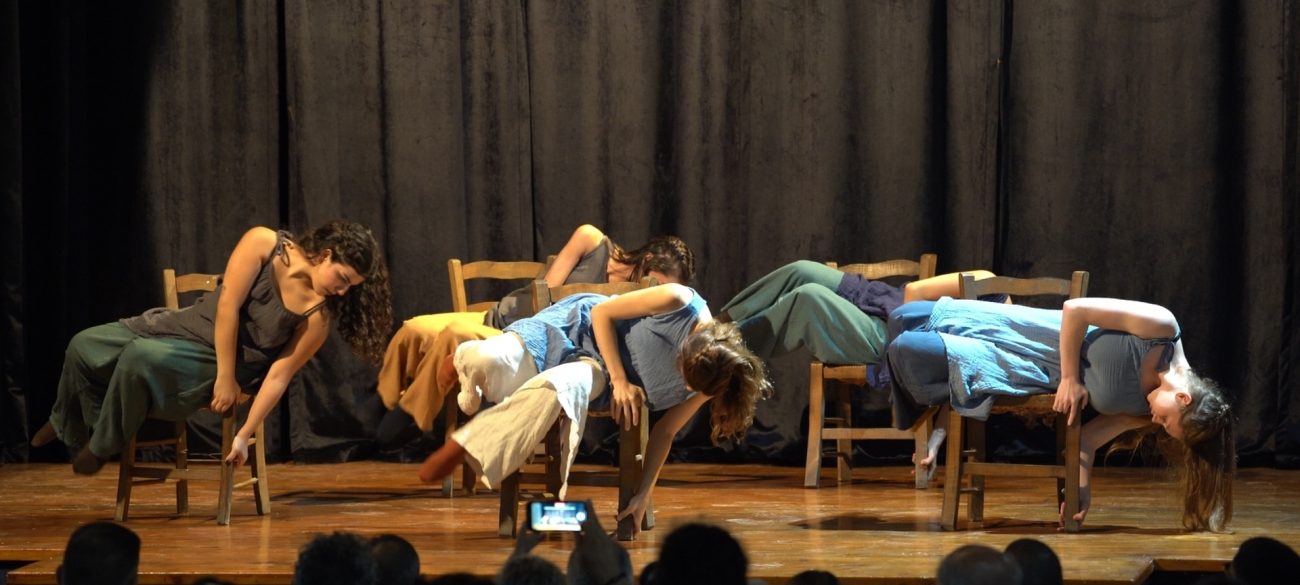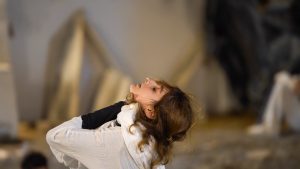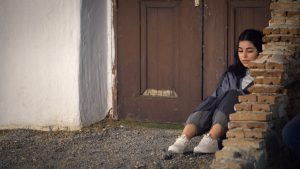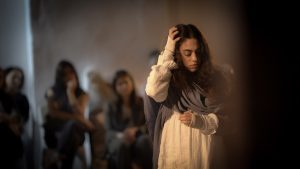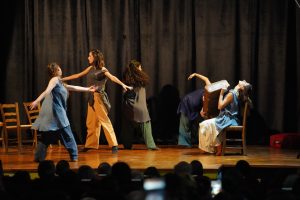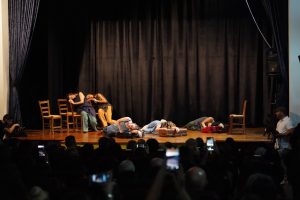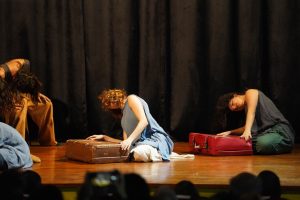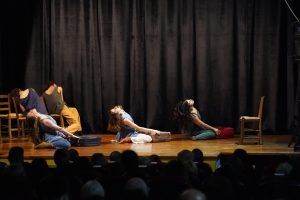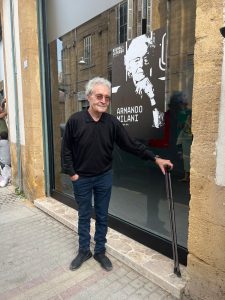Arkın University of Creative Arts and Design (ARUCAD) took part in the first-ever Nicosia Biennale, held from November 7 to December 6, 2025, bringing students, academics, and art spaces into the event. The inclusion of the Bandabuliya Stage, restored by ARUCAD, and ARUCAD Art Space as official performance and exhibition stops allowed the university to contribute to the biennale in a multifaceted way, both through its productions and spatial interventions.
The biennale opened with the performance “GİTME”, staged by ARUCAD Modern Dance Department students. Choreographed by Assistant Professor Dr. Handan Ergiydiren, the performance featured Yağmur Özdağ, Dila Oranlı, Nehir Nur Çelik, İdil İlgi Kabakcı, and Daria Teplykh, earning acclaim from the audience.
In the following days, ARUCAD sponsored the performance “Başkalarının Acısı – The Pain of the Others”, also created by Assistant Professor Dr. Handan Ergiydiren, which was staged at Arkhe Open Space. Exploring the boundaries of sound, body, and space, this work became one of the highlights of the biennale. Sound design was handled by Murat Yakın, while stage and costume design were by Ergiydiren. The production, co-created and performed by Güneş Kozal, Erdoğan Kavaz, Melih Kıraç, Bekir Şimşek, Doğa Uluçlar, Parsa Taghavi, Yağmur Özdağ, and Nehir Nur Çelik, was directed with Güneş Kozal as assistant director.
The Bandabuliya Stage, restored by ARUCAD, hosted several significant performances during the biennale. On November 19, “Echoes of Forgotten Childhoods” by Myrrha Trio & Hakkı Cengiz attracted attention for its sensory approach, integrated with the atmosphere of the venue. On November 20, Salvataro Catalvo’s “Sevgili Çocuklar” also took place at Bandabuliya Stage. Additionally, the performance SOMBRERO M 140, prepared by Assistant Professor Dr. İnal Bilsel, Head of the Sound Arts Design Department, together with Besire Paralık and Sinem Vardar, was part of the biennale program.
The sound installation “Zerre” by Sound Arts Design Lecturer Ataman Kınış was exhibited at the French Cultural Center, becoming one of the biennale’s most noticed works. The piece, which focused on the relationship between space, vibration, and sound, drew significant audience interest.
ARUCAD Art Space, one of the biennale’s exhibition stops, featured the works of artist Armando Milani. Milani’s pieces, noted for their strong visual metaphors, provided an impactful encounter for visitors and students alike.



